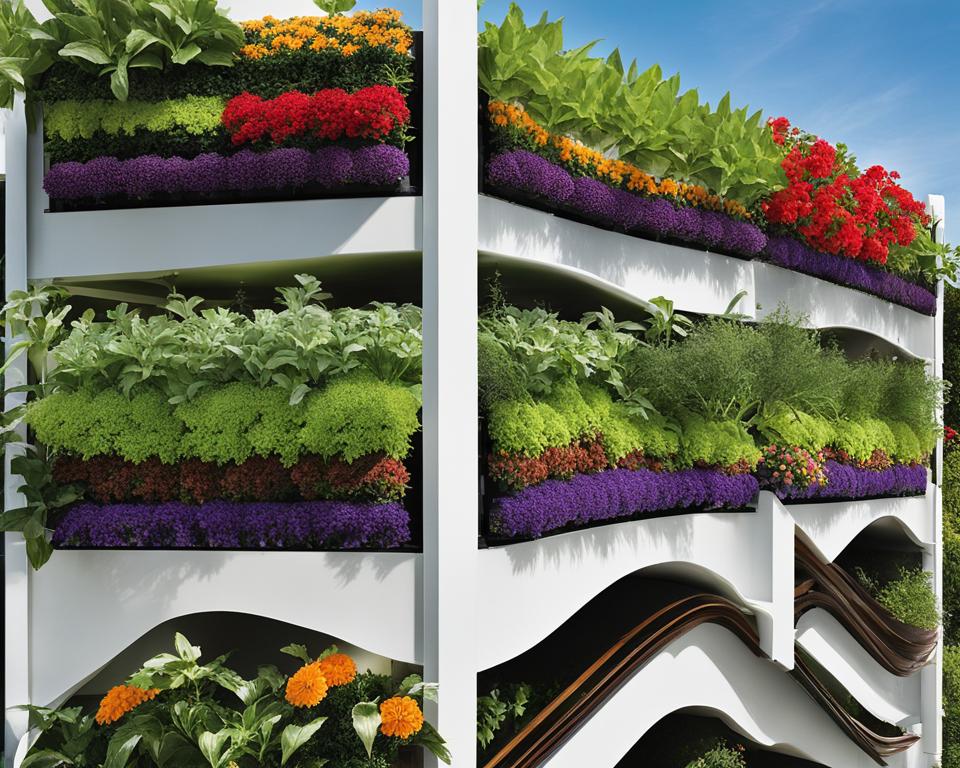When it comes to maximizing your growing space and adding a touch of greenery to your home, vertical gardening systems are an excellent option. From wooden vertical gardens to free-standing tower gardens, there are plenty of choices available. In this article, I’ll explore the best vertical gardening systems for your home and provide tips on how to choose the right one for your space.
Key Takeaways:
- The best vertical gardening systems offer space-saving solutions and add a beautiful touch to your home.
- Consider the location and type of plants you want to grow when choosing a vertical gardening system.
- Vertical gardens can be placed against wooden fences, stone or brick walls, or created on balconies and indoors.
- Free-standing vertical gardens offer flexibility in placement and can be positioned anywhere you like.
- Indoor ‘smart garden’ systems provide an effortless way to grow herbs and vegetables indoors.
Choosing the Perfect Location for Your Vertical Garden
When it comes to creating a successful vertical garden, choosing the right location is crucial. The location will determine the amount of sunlight your plants receive and the overall aesthetics of your garden. Here are some tips and ideas for finding the perfect location:
- Consider the amount of sunlight: Most plants require at least 6 hours of direct sunlight per day. Choose a location that receives adequate sunlight, whether it’s on a sunny balcony or against a south-facing wall.
- Avoid excessive wind: Strong winds can damage your plants and affect their growth. Place your vertical garden in a sheltered area to protect it from excessive wind.
- Accessibility: Make sure the location of your vertical garden is easily accessible for maintenance tasks like watering, pruning, and harvesting. Avoid placing it in hard-to-reach areas where it will be difficult to tend to your plants.
Now that you have some general considerations, let’s explore specific ideas for finding the best location for your vertical garden:
Against a Wooden Fence:
If you have a wooden fence in your backyard, it can serve as a beautiful backdrop for your vertical garden. Choose a firm and well-maintained fence and ensure there is ample space between the fence and the plants. Adding a waterproof lining between the vertical garden and the fence can provide extra protection.
On a Stone or Brick Wall:
If you have a stone or brick wall, it can create a stunning vertical garden display. However, it’s important to take precautions to protect the wall from moisture damage. Consider using a pre-fabricated vertical garden pouch system and adding a waterproof lining between the garden and the wall.
Indoor Living Wall:
If you prefer an indoor vertical garden, an empty wall in your home can be the perfect spot. Choose a wall that receives plenty of natural light, and ensure proper waterproofing is applied to prevent any damage to your home. Living walls, made up of traditional houseplants, can create a stunning and vibrant indoor display.
| Location | Advantages | Considerations |
|---|---|---|
| Against a Wooden Fence | Beautiful backdrop | Requires a firm and well-maintained fence |
| On a Stone or Brick Wall | Stunning vertical display | Requires proper protection to prevent wall damage |
| Indoor Living Wall | Adds greenery to your home | Requires proper waterproofing and ample natural light |
Placing a Vertical Garden Against a Wooden Fence
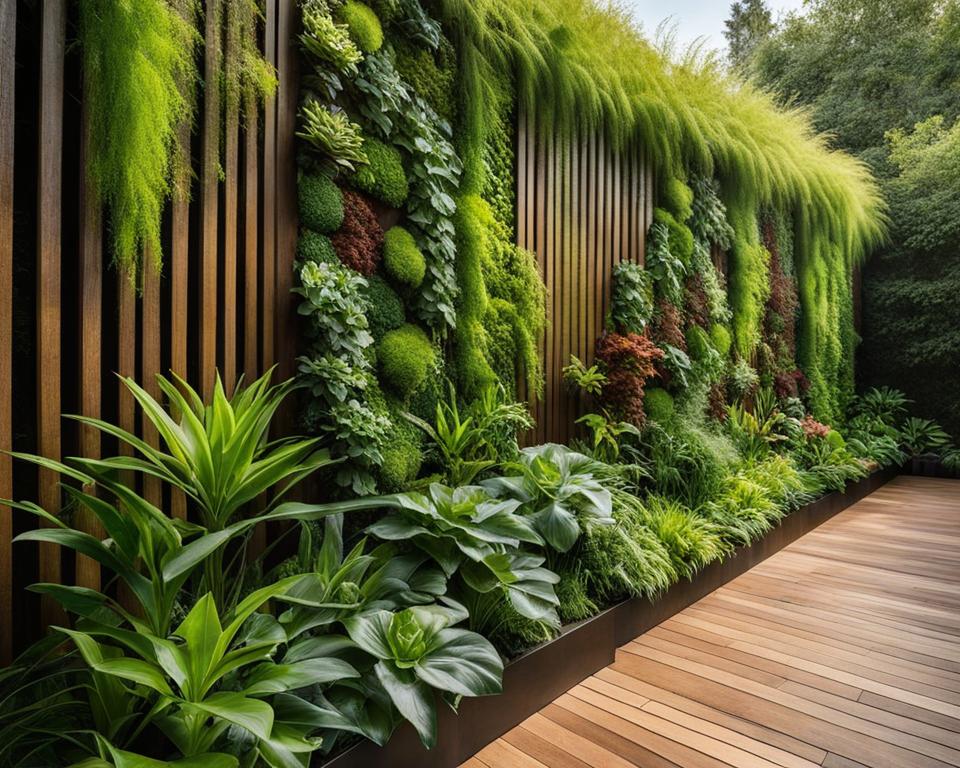
One popular option for creating a vertical garden is to place it against a wooden fence. This not only adds a unique aesthetic to your outdoor space but also maximizes your growing area. However, there are a few important considerations to keep in mind to ensure the success of your wooden vertical garden.
First and foremost, it is crucial to ensure that the wooden fence is sturdy and in good condition. A weak or rotten fence may not be able to support the weight of the vertical garden, leading to potential damage or collapse. Additionally, it is recommended to treat the fence with a suitable protective coating to prevent rot and prolong its lifespan.
To provide extra protection for both the fence and the vertical garden, it is advisable to add a waterproof lining between the garden and the fence. This will help prevent water damage and ensure the longevity of both elements. There are various waterproof lining options available, such as a layer of plastic or a specialized waterproofing membrane.
Lastly, when setting up a vertical garden against a wooden fence, it’s essential to consider the amount of sunlight the area receives. Most plants require a certain amount of direct sunlight each day to thrive, so ensure that the location receives enough light for the types of plants you plan to grow. Additionally, make sure the garden is easily accessible for maintenance tasks such as watering, pruning, and harvesting.
Table: Pros and Cons of Placing a Vertical Garden Against a Wooden Fence
| Pros | Cons |
|---|---|
| Unique and aesthetically pleasing | Requires a sturdy and well-maintained fence |
| Maximizes growing space | May require additional waterproofing measures |
| Easily accessible for maintenance | Dependent on sufficient sunlight exposure |
In conclusion, placing a vertical garden against a wooden fence can be a fantastic way to add greenery and maximize your growing area. By ensuring the fence’s stability, adding a waterproof lining, and considering sunlight exposure, you can create a visually stunning and thriving wooden vertical garden.
Placing a Vertical Garden Against a Stone or Brick Wall
When it comes to creating a vertical garden, utilizing a stone or brick wall as a backdrop can add a stunning aesthetic to your outdoor space. However, it’s important to take steps to ensure the longevity of both your vertical garden and the wall it is placed against. By following proper techniques such as using a vertical garden pouch system and implementing waterproofing measures, you can create a thriving vertical garden without causing any damage to your wall.
One of the most effective ways to set up a vertical garden against a stone or brick wall is by utilizing a vertical garden pouch system. These systems consist of individual pouches that can be mounted directly onto the wall, allowing you to plant various types of flowers, herbs, or vegetables. The pouches are typically made from breathable materials that promote healthy root growth while also providing proper drainage to prevent water accumulation.
In addition to using a vertical garden pouch system, it’s crucial to apply waterproofing measures to protect the integrity of the wall. By placing a waterproof lining between the vertical garden and the wall, you can prevent any moisture from seeping into the wall, which could potentially lead to structural damage or mold growth. Waterproofing can be achieved using materials such as plastic sheeting or rubber liners, ensuring a barrier between the wall and the vertical garden.
When setting up your vertical garden against a stone or brick wall, it’s important to consider the specific needs of the plants you intend to grow. Some plants may require additional support systems to climb the wall, while others may thrive on their own. Additionally, providing adequate irrigation and ensuring proper sunlight exposure are essential factors to consider for the success of your vertical garden.
| Advantages | Disadvantages |
|---|---|
| Utilizes available vertical space | Requires careful waterproofing to protect the wall |
| Creates a visually appealing display | May require additional support systems for climbing plants |
| Can be customized with various plants | Needs proper irrigation and sunlight exposure |
| Maximizes growing space in limited areas | Requires maintenance and regular care |
Tips for Setting Up a Vertical Garden Against a Stone or Brick Wall
- Choose a vertical garden pouch system that suits your aesthetic preferences and provides proper drainage for the plants.
- Apply a waterproof lining between the vertical garden and the wall to prevent any moisture damage.
- Consider the specific needs of the plants you plan to grow and provide additional support systems if necessary.
- Ensure the vertical garden receives adequate sunlight exposure and implement an appropriate irrigation system.
- Regularly maintain and care for your vertical garden, including trimming, fertilizing, and monitoring for pests.
Free-Standing Vertical Gardens
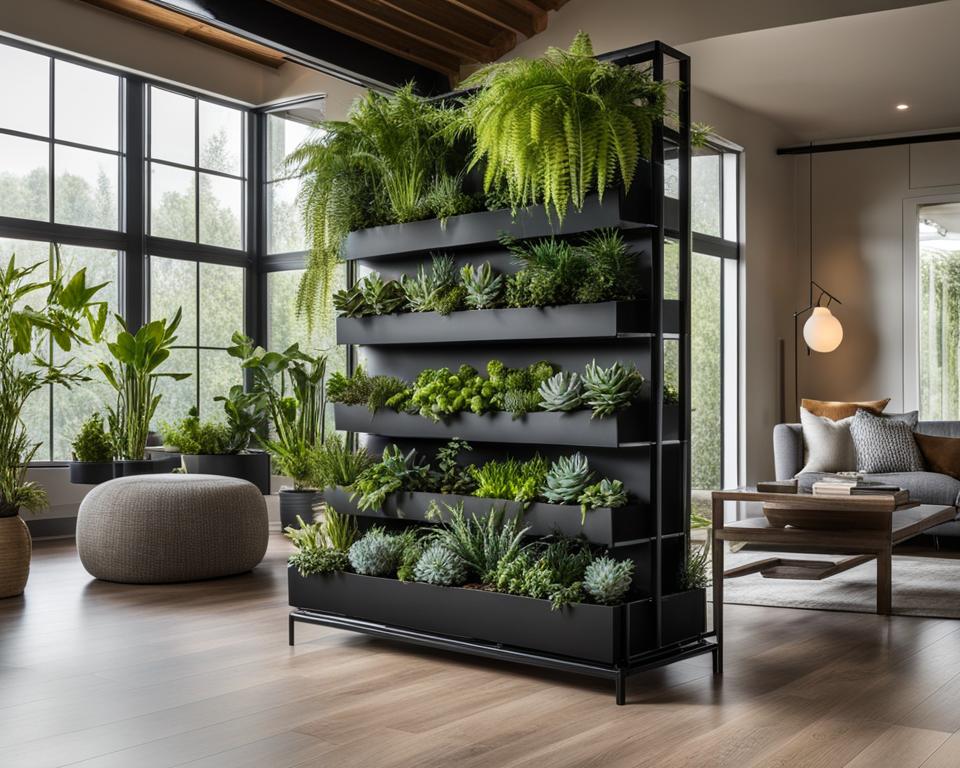
When it comes to vertical gardening systems, free-standing options provide the utmost flexibility in terms of placement. Whether you have limited outdoor space or simply want to add a touch of greenery indoors, free-standing vertical gardens are a fantastic choice. One popular type of free-standing vertical garden is the tower garden, which features multiple tiers of planting space.
Tower gardens are great for growing a variety of plants, from herbs and leafy greens to flowers and small vegetables. They are designed to be compact and portable, making them suitable for balconies, patios, or even small indoor spaces. With their vertical design, tower gardens maximize the use of available space, allowing you to grow more plants in a smaller footprint.
Another advantage of free-standing vertical gardens is that they can be easily moved and rearranged as needed. This flexibility allows you to experiment with different layouts and find the perfect spot for your garden. Whether you want to create a focal point in your backyard or add a touch of nature to your living room, a free-standing vertical garden can be placed virtually anywhere.
To choose the right free-standing vertical garden for your space, consider factors such as size, style, and ease of maintenance. Some tower gardens come with built-in watering systems or self-watering features, which can be a convenient option for busy gardeners. Additionally, ensure that the materials used in the free-standing vertical garden are durable and weather-resistant, especially if you plan to place it outdoors.
Building a Vertical Garden on Your Balcony
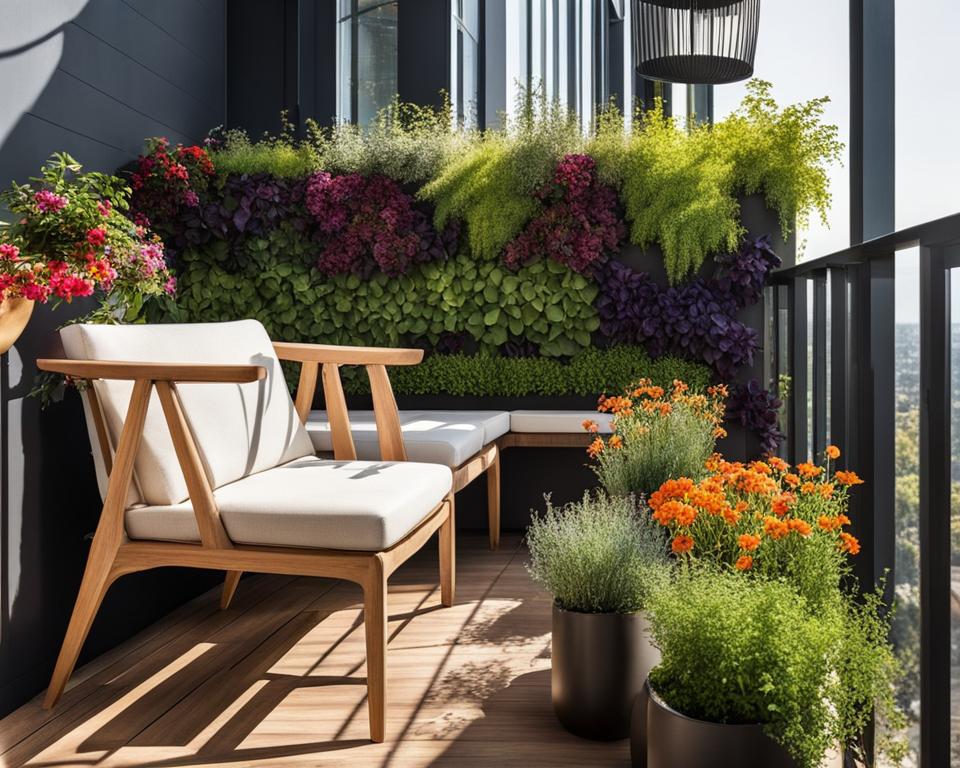
Creating a vertical garden on your balcony is a fantastic way to bring greenery into your urban space. Whether you have a small balcony or a larger one, there are various balcony vertical garden systems available that can help you transform it into a lush and vibrant oasis. With the right planning and care, you can enjoy the beauty and benefits of a vertical garden right outside your door.
Choosing the Right System
When it comes to building a vertical garden on your balcony, it’s important to select a system that suits your space and needs. Consider factors such as the size of your balcony, the amount of sunlight it receives, and your preference for maintenance. There are different types of vertical garden systems available, such as modular stackable planters, hanging pockets, and trellis systems. Choose one that provides adequate support for your chosen plants and fits well within your balcony space.
Plant Selection and Maintenance
Before you start planting, think about the types of plants that thrive in your specific balcony conditions. Consider the amount of sunlight, wind exposure, and temperature variations your balcony experiences throughout the day. Opt for plants that are suitable for container gardening and can tolerate the specific conditions of your balcony. Additionally, ensure proper irrigation and drainage to prevent waterlogging and root rot. Regularly check and maintain your balcony vertical garden by pruning, fertilizing, and repotting as needed to keep it looking beautiful and healthy.
| Benefits of a Balcony Vertical Garden | Tips for Successful Balcony Gardening |
|---|---|
|
|
With a balcony vertical garden, you can create a beautiful and sustainable outdoor space that reflects your style and love for plants. It’s a great opportunity to exercise your creativity and enjoy the benefits of gardening even in a limited space. So go ahead and start building your vertical garden on your balcony today!
Creating an Indoor ‘Living’ Wall in Your Home
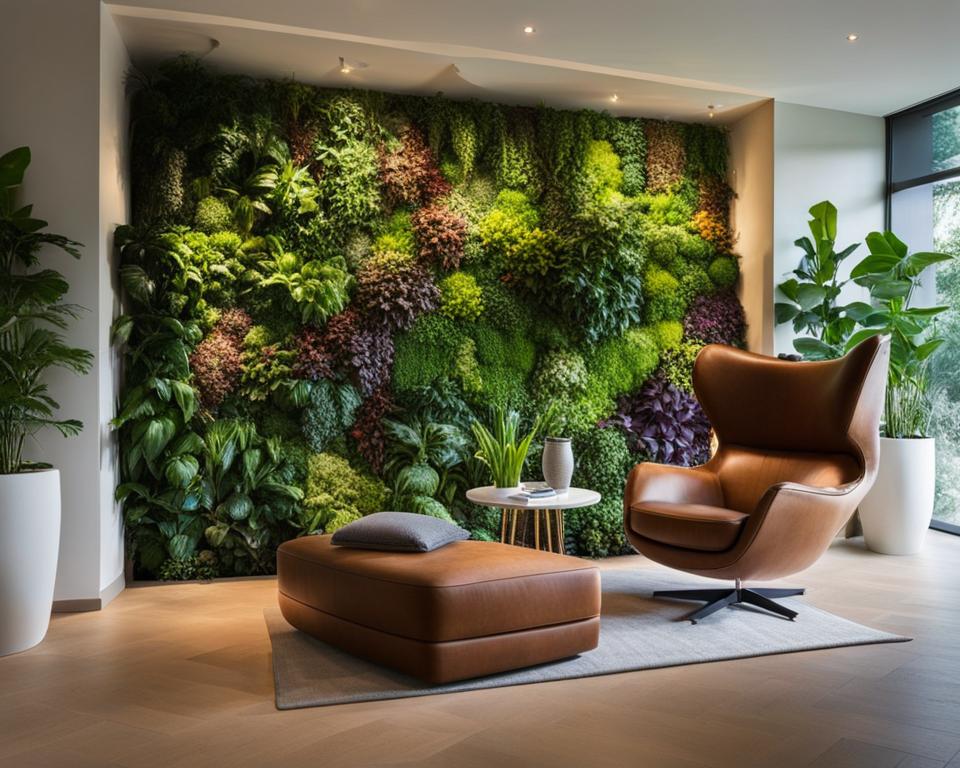
Adding a vertical garden to your indoor space can bring a refreshing touch of nature to your home decor. One popular option is creating an indoor ‘living’ wall, which consists of traditional houseplants arranged vertically to create a stunning display. With the right plants and proper care, you can transform any wall into a vibrant and eye-catching feature.
When creating an indoor ‘living’ wall, it’s important to choose plants that are well-suited for indoor environments. Opt for houseplants that thrive in low light conditions, such as ferns, pothos, and snake plants. These plants are not only visually appealing but also help improve indoor air quality.
To create an indoor ‘living’ wall, start by selecting a suitable location that receives enough natural light. Consider placing your vertical garden near a window where it can receive indirect sunlight. It’s also important to prepare the wall by adding a waterproof lining to prevent any moisture damage.
Tips for Maintaining Indoor Vertical Gardens:
- Regularly check the moisture levels of the soil and water your plants accordingly. Avoid overwatering as it can lead to root rot.
- Rotate your plants occasionally to ensure equal exposure to light.
- Prune and trim your plants regularly to maintain their shape and prevent overgrowth.
- Keep an eye out for pests and treat them promptly to prevent infestations.
A well-maintained indoor ‘living’ wall can bring life and beauty to any room. Whether you choose to create a small vertical garden in your living room or a large-scale installation in your office, the possibilities are endless. Get creative and enjoy the lush greenery that an indoor vertical garden can provide.
Indoor ‘Smart Garden’ Systems
Indoor ‘smart garden’ systems are revolutionizing the way we grow plants indoors. With automated gardening features and built-in technology, these systems make indoor gardening easy and convenient. Whether you’re a beginner or an experienced gardener, an indoor ‘smart garden’ is a great investment for growing herbs and vegetables right in your home.
Benefits of Indoor ‘Smart Garden’ Systems
There are many benefits to using an indoor ‘smart garden’ system. First and foremost, these systems provide the perfect environment for plants to thrive. With adjustable LED lighting and automated watering systems, you can ensure that your plants receive the right amount of light and water for optimal growth.
Another advantage of indoor ‘smart garden’ systems is their space-saving design. These compact systems can be placed on countertops or small shelves, making them ideal for apartments or homes with limited space. Plus, they add a touch of greenery to any room, enhancing the overall aesthetic of your living space.
Lastly, indoor ‘smart garden’ systems are incredibly user-friendly. Most systems come with pre-filled seed pods, eliminating the need for soil and messy planting. The built-in sensors and reminders make it easy to take care of your plants, even if you have a busy schedule.
Top Options for Indoor ‘Smart Garden’ Systems
| System | Features | Price |
|---|---|---|
| Miracle-Gro AeroGarden | LED lighting, automated watering, Wi-Fi connectivity | $99.99 |
| Click and Grow Smart Garden | LED lighting, self-watering system, plant capsules | $84.95 |
| Plantui Smart Garden | LED lighting, automatic watering, modular design | $249.00 |
These are just a few of the top options available in the market. Each system offers its own unique features and price range, allowing you to choose the one that best suits your needs and budget.
With an indoor ‘smart garden’ system, you can enjoy fresh herbs, crisp lettuce, and vibrant flowers all year round. Say goodbye to the limitations of traditional gardening and embrace the convenience and efficiency of an indoor ‘smart garden’.
Best Plants for Vertical Gardening
When it comes to vertical gardening, choosing the right plants is crucial for a successful and thriving garden. Not all plants are well-suited for vertical growth, so it’s important to select ones that have the characteristics to thrive in this unique environment. Whether you’re planning an outdoor vertical garden or an indoor living wall, here are some of the best plants for vertical gardening:
Vibrant Vines and Climbers
Vines and climbers are perfect for vertical gardens as they naturally grow upward and can create a stunning display. Some popular options include:
- Pothos: This hardy plant features long trailing vines with heart-shaped leaves and can thrive in various light conditions.
- Philodendron: With its large, glossy leaves, the philodendron adds a touch of tropical beauty to any vertical garden.
- Clematis: Known for its vibrant and showy flowers, clematis is a climbing plant that works well in outdoor vertical gardens.
Lush Leafy Greens
Leafy greens are not only delicious additions to your meals but also work well in vertical gardens. Some top choices include:
- Lettuce: Fast-growing and versatile, lettuce varieties like romaine, spinach, and arugula thrive in vertical gardens.
- Swiss Chard: With its vibrant stems and large leaves, Swiss chard adds a pop of color and texture to any vertical garden.
- Kale: This nutrient-rich superfood can be grown vertically, providing a fresh supply of healthy greens.
Beautiful Blooms
No vertical garden is complete without the beauty of flowers. Here are some stunning options:
- Petunias: These colorful annuals come in a variety of shades and are perfect for bringing vibrant blooms to vertical gardens.
- Nasturtiums: With their edible flowers and trailing stems, nasturtiums add a touch of whimsy and beauty to vertical gardens.
- Geraniums: These classic flowering plants are easy to care for and come in a range of colors, making them a popular choice for vertical gardens.
Remember to consider the lighting conditions, water requirements, and growth habits of each plant when planning your vertical garden. By selecting the right plants, you can create a stunning and thriving vertical oasis in any space.
Conclusion
Vertical gardening systems offer a multitude of benefits for homeowners. Not only do they maximize growing space, but they also bring a touch of greenery and beauty to any home. With the right location, suitable plant selection, and proper maintenance, vertical gardens can thrive and provide a visually appealing display.
One of the key advantages of vertical gardening is the ability to maximize limited space. By utilizing walls, fences, balconies, or free-standing structures, you can transform any area into a lush garden. This is especially ideal for those living in urban environments or with limited outdoor space.
Beyond the aesthetic appeal, vertical gardens also have practical advantages. They can improve air quality, reduce noise pollution, and even provide insulation to your home. Additionally, vertical gardening allows for easy access and maintenance, making it a convenient option for gardening enthusiasts of all levels.
Whether you choose a wooden vertical garden against a fence, a free-standing tower garden, or an indoor living wall, the possibilities are endless. Vertical gardening presents an opportunity to add your personal touch to your living space while reaping the numerous benefits it offers. So, why not embark on your vertical gardening journey and bring nature’s beauty into your home?
FAQ
What are the best vertical gardening systems for my home?
There are many great options available, including wooden vertical gardens, free-standing tower gardens, and indoor living walls. It ultimately depends on your specific needs and preferences.
How do I choose the perfect location for my vertical garden?
Consider factors such as sunlight availability, wind exposure, plant type, and accessibility for maintenance. Find a spot with lots of sunshine and minimal wind, and ensure it’s easily accessible for watering and trimming.
How do I place a vertical garden against a wooden fence?
Make sure the fence is sturdy and in good condition. Consider adding a waterproof lining for extra protection and treat the fence to prevent rot. Proper preparation and maintenance will ensure a successful vertical garden on your fence.
What precautions should I take when placing a vertical garden against a stone or brick wall?
To prevent damage to the wall, use a pre-fabricated vertical garden pouch system and add a waterproof lining between the garden and the wall. This will protect the wall and allow for proper water drainage.
What are the best free-standing vertical gardens?
There are many options available, such as circular tower gardens and portable vertical gardens. Consider the size and placement to ensure it fits well in your chosen location.
How can I build a vertical garden on my balcony?
You can use pre-fabricated pouch growing systems and consider the available space and natural light on your balcony. Balcony gardening offers a great opportunity for vertical gardens.
What are the options for creating an indoor ‘living’ wall in my home?
Living walls made up of traditional houseplants like succulents and ferns are popular choices. Ensure the wall receives enough natural light and apply proper waterproofing to prevent dampness and mold.
What are indoor ‘smart garden’ systems?
Indoor ‘smart garden’ systems are self-contained gardening systems with pre-filled seed pods, built-in lighting, and automated watering systems. These are perfect for growing herbs and vegetables indoors with minimal effort.
What are the best plants for vertical gardening?
There are many plants that thrive in vertical garden environments, such as herbs, strawberries, lettuce, and flowers like petunias and nasturtiums. Choose plants with upright growth habits and adaptability to vertical conditions.
What are the benefits of vertical gardening?
Vertical gardening maximizes growing space, adds greenery to your home, and creates visually appealing displays. It’s a great way to bring nature into your living space and enjoy the productivity and beauty of gardening.

